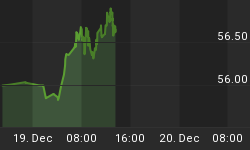The following is part of Pivotal Events that was published for our subscribers February 18, 2016.
Signs of The Times
"Stocks Dive, But This is Not 2008"
- USA Today, January 10.
Similar comforts were said in 2007. That it was not 2001.
"Japanese policymakers said they would seek a global policy response from G20 nations to world market turbulence."
- Reuters, February 10.
How naïve. The original point in intervention was to correct perceived imperfections in the markets. Back when the state was less intrusive markets could create bubbles as well as their consequent collapses. As we have seen, intervention added to the eruption of complacency and is adding to the inevitable instability.
"American corporations repurchased more of their own shares in the first four weeks of the year than they did in the same period last year."
- Bloomberg, February 10.
The story included that for all of 2015 the pace of buybacks was the greatest since 2007.
"Europe's top four economies suffered steeper drops in industrial output during December than any analyst forecast."
- Reuters, February 10.
"The dollar will destroy itself and a replacement will come along."
- Interview, Jim Rogers, February 16.
Stock Markets
As with any stressed-out market, bottoming was difficult.
The main bottom for most commodities and senior stock indexes was in the third week of January. Our January 13th Pivot noted that the "intense pressure could culminate within a few weeks".
The January 20th view was that crude was poised for a rally and with that other distressed sectors would rebound.
Transports led on the way down and have led on the rebound. The extreme low was 6403 on January 20th. The rebound has made it to 7325, which is a bit above the 50-Day ma. Let's call it constructive.
Senior indexes such as the S&P bounced out of the January 20th low and set a lower low on Friday. The 50-Day is at 1960 and reaching this seems likely.
Within the sectors we review, the financials were more severely hit. For the BKX, the Daily RSI was very oversold at 21. The index low was 60 on Friday and the bounce has made it to 62. The 50-Day is at 67 and that level is possible.
Broker-Dealers (XBD) suffered a similar plunge, but did not become as oversold. The low was 135 on Friday and at 147 the bounce has further to go.
Deutsche Bank (DB) registered a Downside Capitulation last week at 14.78. The rebound has made it to 18 and it could continue out to the 50-Day at 21.
The Oil Patch (XLE) became oversold at 49.93 on January 20th and bounced to 58. The next decline was to 52. Now at 57.66 it is testing the 50-Day. Getting above would be constructive.
Much the same holds for base metal miners (XME), but with a better rebound. The low was 11.38 and the initial rally made it to 15.53, somewhat above the 50-Day. Now at 16 it has tested the 50-Day and moved to new highs. This is constructive.
So far, so good.
Precious Metals
Things were developing nicely for an important bottom. And suddenly everyone had to get aboard.
Our comfort zone needed gold stocks to be outperforming the bullion price. And this was accomplished with important lows being set from late August to early January. The HUI/Gold index set key lows at the 92 level in September and at 96 in November. We advised accumulating a modest position in gold stocks in November and going into the financial hit that culminated in mid-January.
From 91 in January, the index jumped to 132 last week.
Within this, the HUI set key lows at the 101 level in September and November. Then there was the hit to 99 in January. The rebound made it to 163 last week.
From the severe hit in August to the 63 percent gain to last week, the Daily RSI has accomplished a huge swing.
The smaller-cap index, GDXJ, made essentially the same moves but with a gain of 47 percent.
Toronto's exploration index, ZJG, jumped 43 percent.
The action became impetuous and a period of consolidation is needed.
This is early days in a cyclical bull market for gold shares.
Link to February 19, 2016 Bob Hoye interview on TalkDigitalNetwork.com: http://talkdigitalnetwork.com/2016/02/low-crude-not-as-complicated-as-many-claim/
Listen to the Bob Hoye Podcast every Friday afternoon at TalkDigitalNetwork.com















